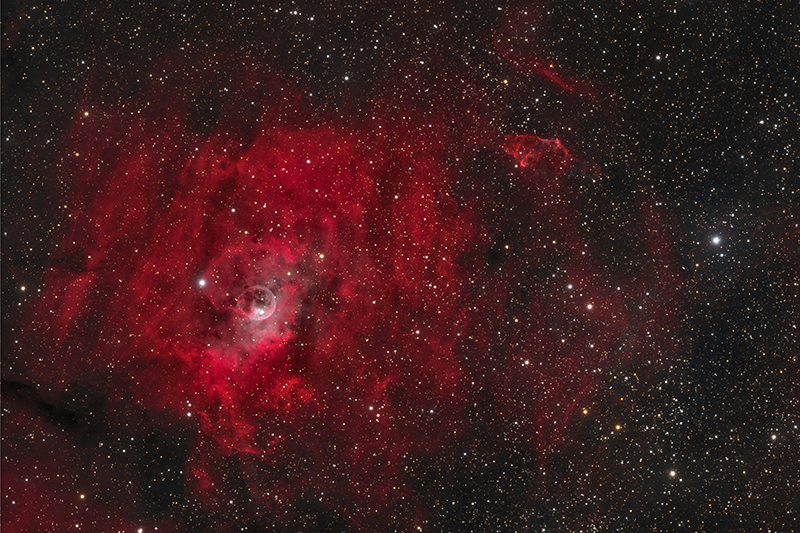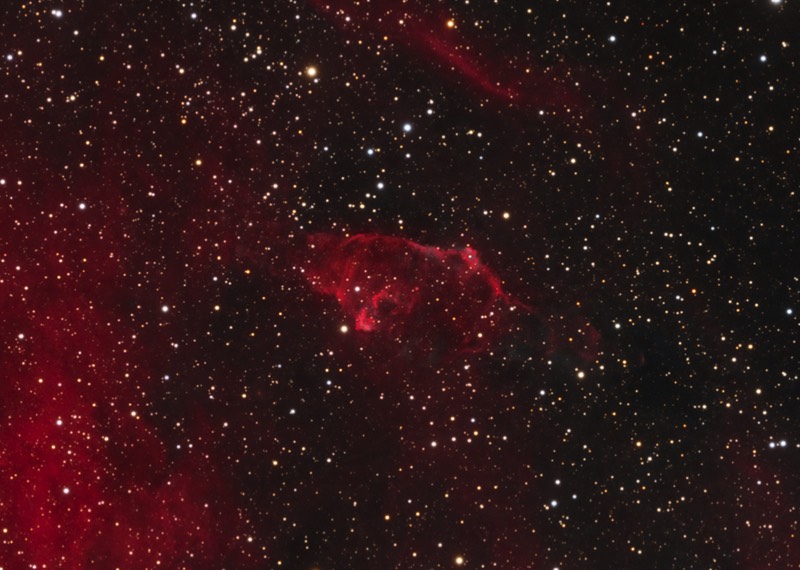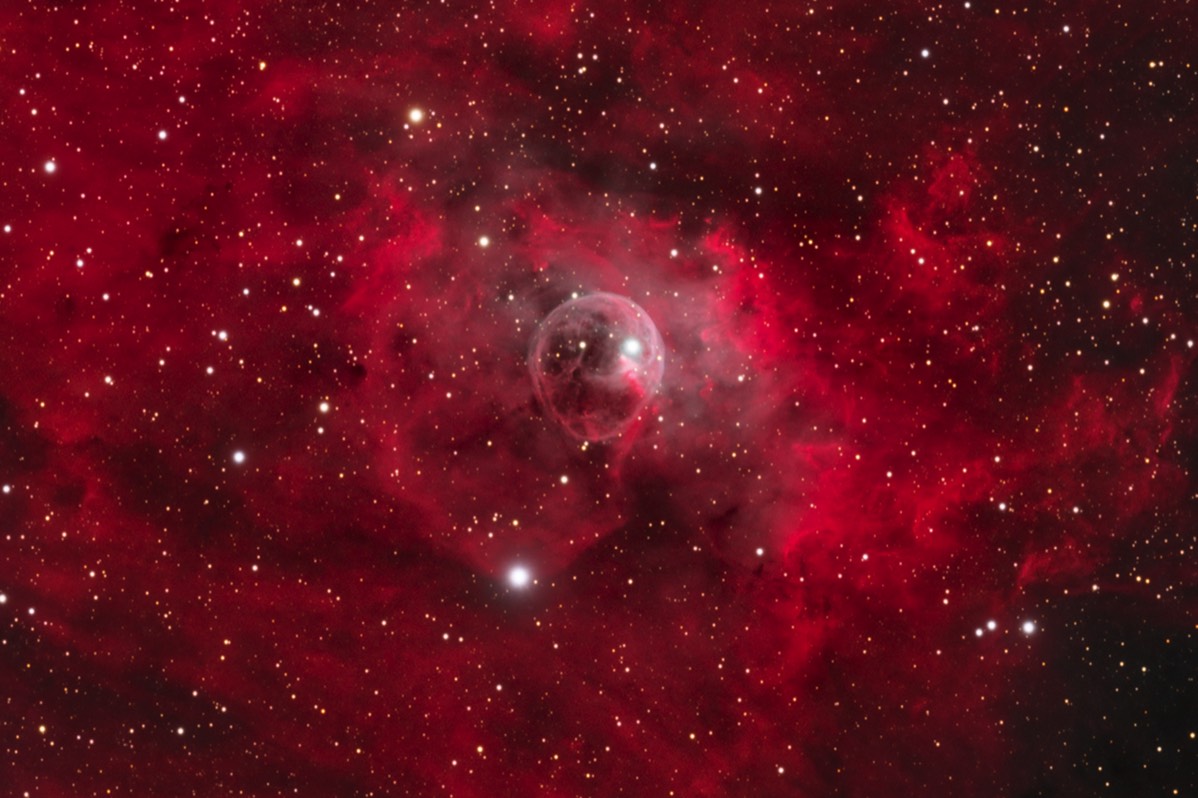A fiery bubble and planetary nebula
Published 15 Jan 22
Full resolution here: Full Resolution (18mb) 50% resolution (8mb)
Planetary Nebula KjPn8
A rotated and cropped version of the Bubble Nebula
About this object
The image on top is a wide view of the Bubble Nebula and a Planetary nebula (KjPn8) in the constellation Cassiopeia. The Bubble Nebula (NGC 7635) is a HII, emission nebula with the bubble created by the large and hot central star (BD+60˚ 2522) which in the top image is located in the lower part of the bubble. Towers of HII emission can be seen all around the bubble pointing towards the central star. If you dare, select the full resolution view (17mb) to see these massive HII towers and the bubble in high resolution. The third image is a cropped and rotated version of just the bubble highlighting the Bubble and associated emission
The planetary nebula KjPN8 (PN G 112.5-00.1) is an interesting and unusual planetary nebula. It's located in the upper right of the image. It has a bipolar lobe of about 14 arcmin in size. The central star and core of the planetary nebula is a very small 3-4 arc sec. It's very red and seems to have a ring of HII emission around it. (See the KjPN8 crop above). Click on this image to see the full resolution view and the small core of the planetary nebula. There are several theories about how this planetary nebula formed. New research using ground based and the Hubble Space Telescope points to two separate events. Two bipolar stars essentially creating two planetary nebula. Its one of the largest bipolar lobes known and may be one of the only objects of this type discovered. KjPn8 was discovered in 1971 by M.A. Kazaryn and E.h. Pavsamyan. I collected 19hrs of Ha and OIII data on this object. However it has very little OIII and mainly emits in the HII spectrum.
The main image is a cropped portion of a larger field of view. The image resolution is .64 arcsec/pixel. See the un-cropped and annotated version highlighting some of the objects in the image.
The image on top is a wide view of the Bubble Nebula and a Planetary nebula (KjPn8) in the constellation Cassiopeia. The Bubble Nebula (NGC 7635) is a HII, emission nebula with the bubble created by the large and hot central star (BD+60˚ 2522) which in the top image is located in the lower part of the bubble. Towers of HII emission can be seen all around the bubble pointing towards the central star. If you dare, select the full resolution view (17mb) to see these massive HII towers and the bubble in high resolution. The third image is a cropped and rotated version of just the bubble highlighting the Bubble and associated emission
The planetary nebula KjPN8 (PN G 112.5-00.1) is an interesting and unusual planetary nebula. It's located in the upper right of the image. It has a bipolar lobe of about 14 arcmin in size. The central star and core of the planetary nebula is a very small 3-4 arc sec. It's very red and seems to have a ring of HII emission around it. (See the KjPN8 crop above). Click on this image to see the full resolution view and the small core of the planetary nebula. There are several theories about how this planetary nebula formed. New research using ground based and the Hubble Space Telescope points to two separate events. Two bipolar stars essentially creating two planetary nebula. Its one of the largest bipolar lobes known and may be one of the only objects of this type discovered. KjPn8 was discovered in 1971 by M.A. Kazaryn and E.h. Pavsamyan. I collected 19hrs of Ha and OIII data on this object. However it has very little OIII and mainly emits in the HII spectrum.
The main image is a cropped portion of a larger field of view. The image resolution is .64 arcsec/pixel. See the un-cropped and annotated version highlighting some of the objects in the image.
Image Details
- Optics : Stellarvue SVX 152T refractor @f8 1200mm FL
- Mount: Paramount MYT
- Camera: ZWO ASI6200
- Filters: Chroma 50mm LRGB
- Exposure (min): RGBHaOIII 250:250:240:1160:1190, 51.2hrs, 2x2 binning drizzled to 1x1
- Automation Control: The Sky X, Voyager, PrimaluceLab Eagle 4
- Guiding: StarlightXpress Lodestar X2
- Processing Software: PixInsight, PS CC
- Location: Stark Bayou Observatory, Ocean Springs, MS, Eldorado star party, Eldorado Texas
- Sky: Typical SQM 19.6-20.1, Bortle 5, Suburban, Eldorado Bortle 2
- Date: 21Oct - 30 Nov 2021









